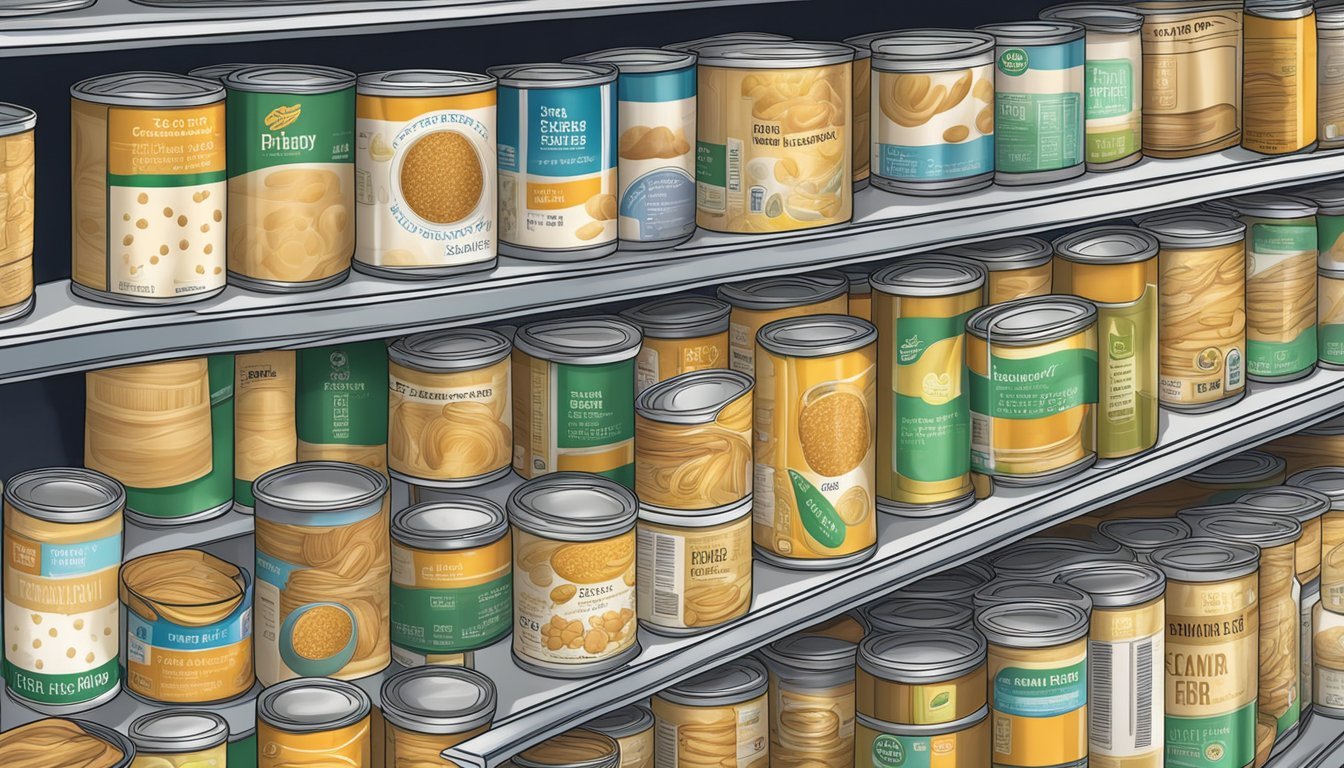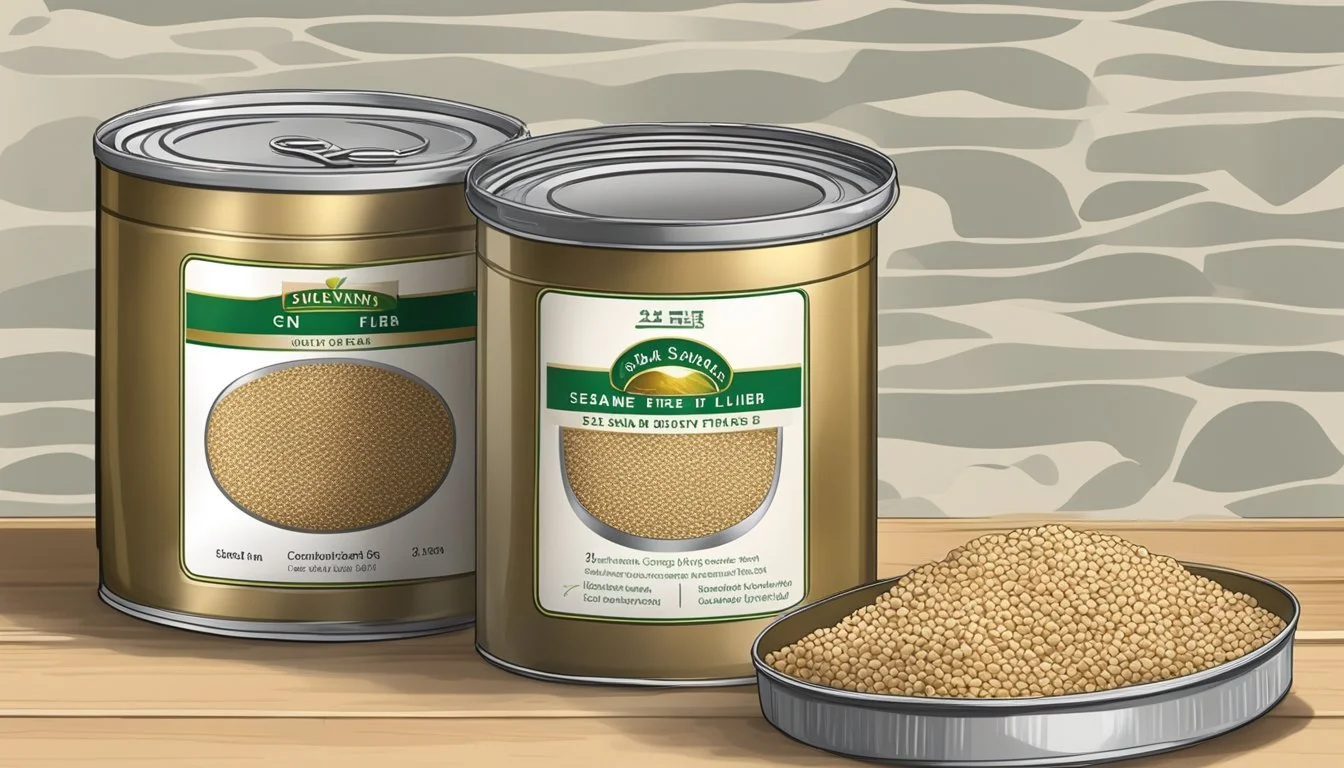How Long Does Canned Sesame Seed Fiber Last?
Shelf Life and Storage Tips
Determining the shelf life of canned sesame seed fiber requires understanding the various factors that affect its longevity. Canned goods are known for their extended shelf life due to the airtight sealing process which protects the contents from exposure to air and contaminants. When it comes to sesame seed products, including sesame seed fiber, their preservation is also influenced by their high oil content, which can be prone to rancidity over time. However, the canning process can significantly extend the freshness of sesame seeds by inhibiting the degradation from external factors.
It is essential to consider storage conditions after canning sesame seeds to maintain their quality. Storing canned sesame seed fiber in a cool, dry place helps to delay spoilage and preserve the seeds' nutritive value. While the exact duration of how long canned sesame seed fiber lasts can vary, a properly sealed and stored can will typically have a shelf life that surpasses that of dried or raw sesame seeds, due to the protection from oxidation and moisture provided by the canning process. Consumers should always check any dates provided by the manufacturer and inspect the can for signs of damage or swelling, which may indicate spoilage.
Understanding Sesame Seeds
Sesame seeds, known for their nutty flavor, are not just a culinary garnish but a nutrient-rich food. They contain a variety of beneficial components, including protein, fiber, and healthy fats.
Types of Sesame Seeds
Sesame seeds come in different varieties, primarily based on their hull. The unhulled seeds retain the outer, edible husk, giving them a browner appearance and a more pronounced flavor. The hulled seeds have this layer removed, resulting in a softer texture and a lighter color. Additionally, there are black sesame seeds which offer a stronger taste and contain different nutritional properties compared to their white or tan counterparts.
Nutritional Profile
Sesame seeds' nutritional value is significant due to their composition of healthy fats, protein, and fiber. Here is a breakdown of their key nutrients per 100 grams:
Nutrient Amount Protein 18 g Fiber 11.8 g Healthy Fats 49.67 g
Moreover, sesame seeds are a good source of minerals such as calcium, iron, and magnesium, and they provide a decent amount of vitamins, like B vitamins. Their antioxidant content, particularly sesamin and sesamolin, contributes to their health benefits.
Potential Health Risks
While sesame seeds offer health benefits, they may also pose risks for some individuals. Allergies to sesame are common and can lead to severe reactions. People with sesame seed allergies should avoid them entirely. Consuming sesame seeds in excessive amounts can also lead to calorific over-intake due to their high fat content, which needs consideration in diet planning.
Shelf Life and Expiration
Canned sesame seed fiber typically comes with a best by date, and understanding its longevity is essential. This section demystifies the expiration, factors affecting shelf life, and recognizable signs of spoilage.
Expiration Date and Best By
Expiration Date: Canned sesame seed fiber typically does not have a strict expiration date. Still, it does come with a best by date, which ideally suggests the time frame in which the product will retain maximum quality.
Best By: An unopened can of sesame seed fiber may remain fresh for up to two years past the printed date if stored under suitable conditions. Once opened, one should consume it within 3 to 6 months for optimal freshness.
Shelf-Life Factors
Canned sesame seed fiber's shelf life can be influenced by the following:
Storage Conditions: Keep cans in a cool, dry place. Exposure to heat or humidity can accelerate deterioration.
Packaging Integrity: Any damage to the can may expose the seeds to air and moisture, shortening their usable life.
Opened vs Unopened: An unopened can has a longer shelf life than an opened one. Transfer opened sesame seed fiber to an airtight container to preserve freshness.
Signs of Spoilage
One can detect spoilage of canned sesame seed fiber by examining these signs:
Off Smell: If the seed fiber emits a rancid or sour smell, it is likely spoiled.
Discoloration: Any change in color from the original may indicate that it is no longer good to consume.
Texture: Sesame seed fiber that clumps together or changes texture might be a sign of moisture contamination, leading to spoilage.
Proper Storage Techniques
The longevity of canned sesame seed fiber hinges on maintaining optimal storage conditions. By adhering to specific guidelines across various storage methods, one can ensure the preservation of the fiber's quality and freshness.
Pantry Storage
In the pantry, sesame seed fiber should be stored in a cool, dry place. An optimal temperature range to aim for is between 40°F (4°C) and 60°F (15°C). One should use an airtight container to protect the fiber from moisture and pests. This can typically preserve the sesame seed fiber for up to two years.
Temperature: 40°F (4°C) – 60°F (15°C)
Container: Airtight
Shelf Life: Up to 2 years
Refrigerator Storage
When stored in the refrigerator, sesame seed fiber benefits from the cooler temperatures and reduced exposure to light. It should still be kept in an airtight container to prevent the absorption of odors and moisture from the refrigerator's environment. Refrigeration can extend freshness up to one year.
Container: Airtight
Shelf Life: Up to 1 year
Freezer Storage
For the longest storage potential, one can place sesame seed fiber in the freezer. Similar to refrigerator storage, it is imperative to use an airtight container. Freezing sesame seed fiber can help maintain its quality for about six months after opening.
Container: Airtight
Shelf Life: 6 months after opening
Factors Affecting Shelf Life
The preservation of canned sesame seed fiber's quality over time is reliant upon various influential factors, including storage conditions, processing and finishing methods, and the inherent oil content, which may lead to rancidity.
Storage Environment
Temperature, humidity, and exposure to sunlight all play critical roles in the longevity of canned sesame seed fiber. It is essential to store the seeds in cool and dry conditions, as heat and moisture can prompt spoilage. Containers should be kept in a dark place away from direct sunlight to avoid degradation of the seeds.
Ideal storage conditions include:
Temperature: Below 60°F (15°C)
Humidity: Low
Light: Minimal exposure
Processing and Packaging
The processing steps like roasting and packaging materials have a significant impact on shelf life. Roasted sesame seeds typically have a more extended shelf life compared to raw seeds due to reduced moisture levels. Cans or airtight containers, which minimize air contact, preserve the quality of sesame seed fiber better than packaging that allows for air permeability.
Roasted vs. Raw Sesame Seeds:
Roasted: Longer shelf life due to decreased moisture content
Raw: Shorter shelf life, more prone to spoilage
Oil Content and Rancidity
Sesame seeds are high in oil content, which includes a portion of unsaturated fats susceptible to rancidity. The onset of rancidity is accelerated by exposure to air, heat, and light, causing the oils to spoil and develop an off-flavor. Using the seeds before they turn rancid and ensuring optimal storage conditions are key to maintaining freshness.
Signs of rancidity include:
Odor: Off-smelling or stale scent
Flavor: Bitter or sour taste
Extending Shelf Life
Canned sesame seed fiber's longevity is influenced by storage techniques, such as sealing, freezing, and roasting. These methods can significantly extend its usability beyond its expected expiration.
Proper Sealing Methods
Proper sealing is pivotal for maintaining the freshness of canned sesame seed fiber. It is recommended to use airtight containers to prevent moisture and air from shortening the shelf life. Vacuum-sealed bags are also an effective option, offering additional protection against spoilage.
Freezing Techniques
Freezing is a reliable method to extend the shelf life of sesame seed fiber. When freezing, one should ensure that the seeds are in an airtight container or freezer bag to avoid freezer burn. This technique allows sesame seed fiber to last for up to six months without significant loss of quality.
Tips for Roasting
Roasting not only enhances the flavor but can also help to extend the shelf life of sesame seeds. After roasting, sesame seed fiber should be allowed to cool and then stored in an airtight container. Cool, dark places are ideal for storage, and roasting beforehand can help in maintaining the quality of the seeds over time.
Usage and Recipes
When incorporating canned sesame seed fiber into meals, chefs find that its nutty flavor complements a plethora of dishes, ranging from salads to baked goods. This versatility extends to sesame seed oil with its distinct taste enhancing both cooking and garnishing techniques. The stability of canned fiber also promises extended usability in recipes without compromising the nutritional benefits important for digestion.
Incorporating into Meals
One can easily integrate canned sesame seed fiber into a variety of meals to enhance their nutritional profile and introduce an extra layer of flavor. Salads benefit from the fiber's texture and taste, offering a crunchy complement to leafy greens. In baking, the addition of sesame seed fiber can enrich breads and crackers with its wholesome qualities. Stir-fries also see an uptick in flavor and health benefits, as the fiber withstands high cooking temperatures well.
Sesame Seed Oil Use
Sesame oil, derived from the seeds, holds a revered place in cooking due to its potent flavor that carries hints of nut and smoke. It's often used sparingly to finish dishes or in dressings:
Cooking: A few drops can elevate the taste of stir-fries and marinades.
Garnishing: A light drizzle on finished dishes adds an aromatic touch.
The oil should not be overheated to maintain its taste profile and healthful properties.
Recipe Preservation
While canned sesame seed fiber retains its qualities well, proper storage is key to preserving it for use in recipes over time:
Sealed containers can keep the fiber fresh.
Avoiding moisture exposure helps prevent spoilage.
Incorporating the fiber into recipes effectively ensures that the flavor and nutritional benefits are not lost, supporting digestion and adding a unique taste to various foods. Cooks should always check the integrity of the fiber before use to maintain the quality of their dishes.
Frequently Asked Questions
This section addresses common concerns about the shelf life of canned sesame seed fiber, how to spot when seeds have gone rancid, and the best practices for storage and testing.
Handling Rancid Sesame Seeds
When sesame seeds spoil, they develop an unpleasant, rancid odor and taste due to the oils becoming oxidized. Rancid sesame seeds should not be consumed as their nutritional value decreases and they could potentially cause digestive discomfort. To identify rancid seeds, they should perform a smell test by taking a whiff of the opened can; any off or sharp odors indicate spoilage. It's also wise to visually inspect for any unusual color changes—healthy sesame seeds typically range from a pale cream (for hulled varieties) to a slight brown (for unhulled varieties).
Managing Bulk Purchases
Storing canned sesame seed fiber in bulk requires careful management to prevent the seeds from turning rancid. They must keep the seeds in a cool, dark, and dry place. An unopened can has a shelf life of approximately two years; once opened, the seeds should be transferred to an airtight container and can be kept in the pantry for 3 to 6 months, in the refrigerator for up to 1 year, or in the freezer for an additional six months.
Performing a Taste Test
If one suspects the sesame seeds in their pantry might be nearing the end of their shelf live or showing signs of spoilage, they can conduct a taste test along with the smell test. Firstly, they should taste a small amount of the sesame seeds to ensure they still have a mild, nutty flavor. It's important to note that any bitterness or harsh aftertaste could indicate rancidity. If uncertain, they should err on the side of caution and discard the seeds as consuming rancid seeds could pose a health risk.
Conclusion
The longevity of canned sesame seed fiber is contingent on appropriate storage conditions. When stored correctly, canned sesame seed fiber retains its quality for a considerable time. Following best practices for storage is crucial in maintaining the nutrients of the seeds, which include valuable protein and healthy fats, without exposure to health risks due to spoilage.
Storage guidelines for maintaining quality include:
Keeping the seeds in a cool, dry place.
Ensuring containers are airtight.
Avoiding exposure to heat, light, and moisture.
With optimal storage, canned sesame seed fiber may last significantly beyond the printed expiration date. However, consumers must be mindful of the seeds’ taste and aroma, as these are reliable indicators of freshness. If the seeds exhibit an off-smell or a rancid taste, they should be discarded to avoid the consumption of spoiled seeds.
To ascertain the lasting freshness of sesame seed fiber, it is helpful to consider the following indicators:
Indicator Freshness Assessment Taste Neutral, nutlike Aroma Slight, pleasant Texture Crisp Appearance Even coloration
Upon noticing any deviation from the above characteristics, it is advised to err on the side of caution and dispose of the product to prevent any potential health risks. By adhering to these storage recommendations, individuals can maximize the lifespan of their sesame seed fiber, thereby enjoying its benefits for as long as possible.










